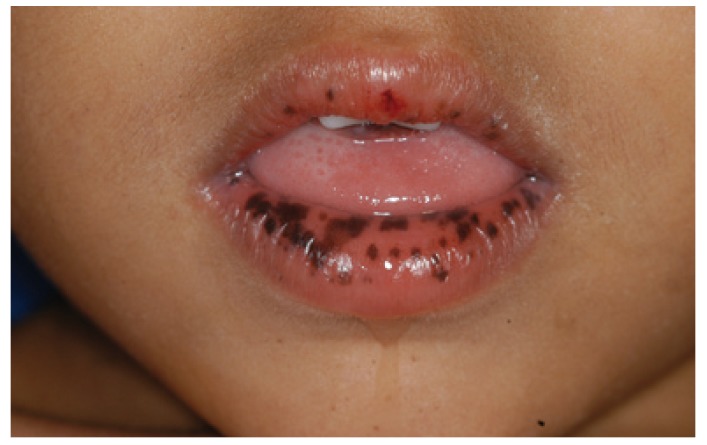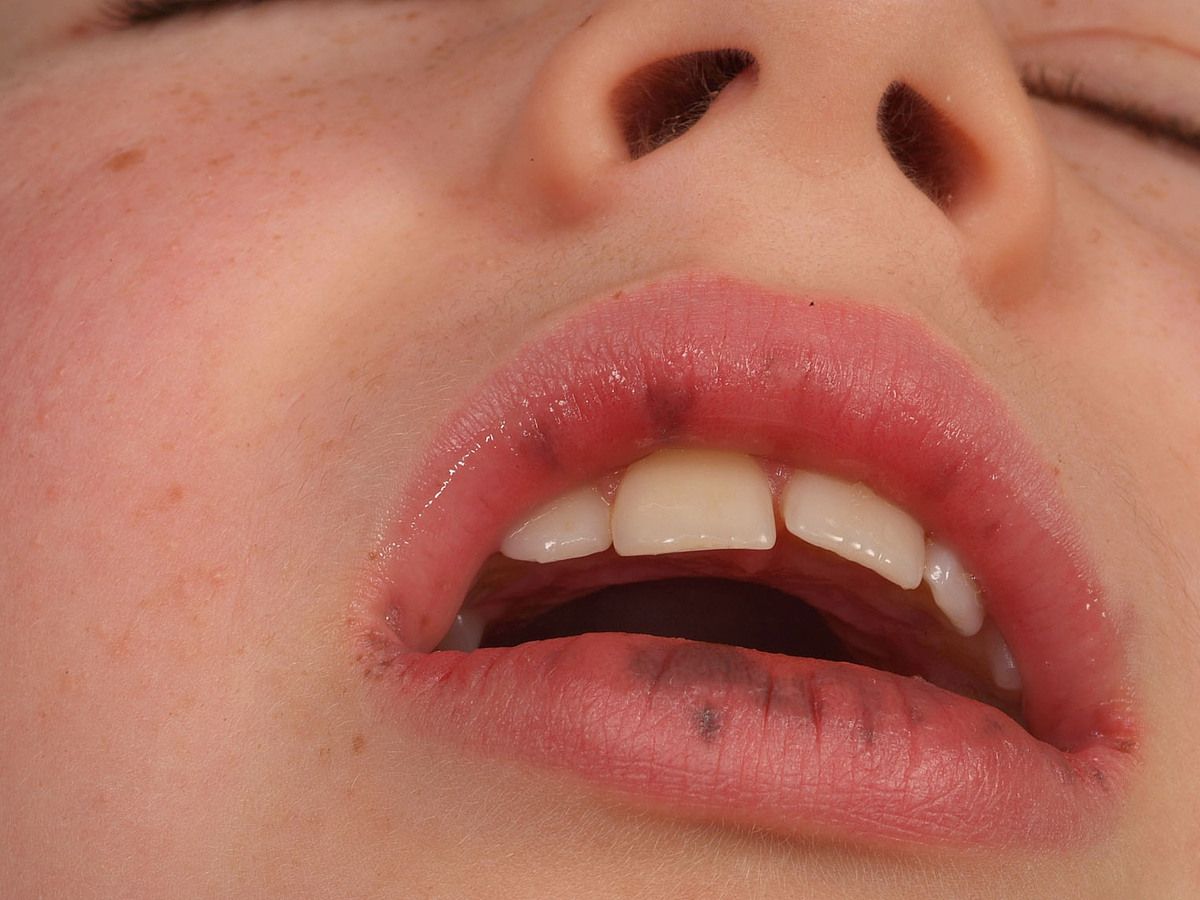Disclaimer: This article is for educational purposes only and is not a substitute for professional medical advice, diagnosis, or treatment. Always seek the guidance of your physician or other qualified health provider with any questions you may have regarding a medical condition.
Peutz-Jeghers Syndrome: The Rare Condition That Starts With Dark Spots in the Mouth
Peutz-Jeghers syndrome (PJS) is a rare inherited disorder that often reveals itself in an unexpected way—through small dark spots on the lips, mouth, and skin. While these pigmented patches may look harmless, they are important warning signs of a deeper health issue. PJS is not just a cosmetic condition. It is closely linked to the growth of intestinal polyps and a significantly higher risk of certain cancers.
In this article, we will explore the causes, symptoms, complications, diagnosis, and treatment options for Peutz-Jeghers syndrome. Understanding this condition can help in early detection and proper medical management, which are crucial for reducing health risks.

What Is Peutz-Jeghers Syndrome?
Peutz-Jeghers syndrome is a genetic condition passed down in families through an autosomal dominant inheritance pattern. This means that if one parent carries the faulty gene, there is a 50% chance of passing it on to their children. The disorder is caused by mutations in the STK11 (LKB1) gene, which normally helps control cell growth and prevent tumors.
The syndrome is named after two physicians: Jan Peutz, a Dutch doctor who first described it in 1921, and Harold Jeghers, who later expanded on the findings in the 1940s. Today, doctors recognize PJS as a condition involving both mucocutaneous pigmentation and hamartomatous polyps in the gastrointestinal tract.

Early Signs: The Dark Spots on Lips and Mouth
One of the most distinctive features of Peutz-Jeghers syndrome is pigmented spots that usually appear in childhood. These dark blue, brown, or black patches may be found on:
-
The lips and around the mouth
-
The inside lining of the cheeks (oral mucosa)
-
The gums and tongue
-
Fingers, toes, and sometimes the genital area
These spots often look similar to freckles but are darker and do not fade with age or sun exposure. In many patients, these skin changes are the first visible clue that leads doctors to suspect PJS.

Gastrointestinal Polyps: The Hidden Risk
The second major feature of Peutz-Jeghers syndrome is the development of hamartomatous polyps in the stomach and intestines. These polyps are noncancerous growths made up of an abnormal mixture of tissues.
While not initially cancerous, polyps can cause several complications:
-
Intestinal obstruction: Large polyps may block the intestines, leading to abdominal pain, bloating, and vomiting.
-
Intussusception: A dangerous condition where one part of the intestine slides into another, causing severe abdominal pain.
-
Bleeding: Polyps can bleed and lead to chronic anemia.
Children and young adults with PJS may need surgery to remove problematic polyps, and ongoing monitoring is essential.
Increased Cancer Risk
One of the most concerning aspects of Peutz-Jeghers syndrome is its strong association with cancer. Individuals with PJS have a much higher lifetime risk of developing several types of cancers compared to the general population. These include:
-
Gastrointestinal cancers: Colon, stomach, small intestine, and pancreas
-
Gynecological cancers: Ovarian, cervical, and uterine cancers
-
Breast cancer: Significantly elevated risk, especially in women
-
Testicular cancer: Certain rare tumors may appear in males
Studies suggest that the overall lifetime risk of cancer in patients with PJS may be as high as 80–90%. Because of this, early diagnosis and routine surveillance are critical to improving long-term health outcomes.
Diagnosis of Peutz-Jeghers Syndrome
Doctors use a combination of clinical signs, family history, and medical tests to diagnose PJS. The main criteria include:
-
Mucocutaneous pigmentation: Dark spots in and around the mouth or other areas.
-
Histology of polyps: A biopsy showing hamartomatous polyps.
-
Family history: Presence of the syndrome in close relatives.
-
Genetic testing: Identification of mutations in the STK11 gene.
Early diagnosis allows families to begin surveillance programs that reduce the risks of complications and cancers.
Management and Treatment
There is no cure for Peutz-Jeghers syndrome, but careful medical management can significantly improve quality of life and reduce health risks.
Polyp Management
-
Endoscopic removal: Doctors often use endoscopy to remove polyps without major surgery.
-
Surgery: Required in severe cases where polyps cause blockages or intussusception.
Cancer Surveillance
Because of the high cancer risk, individuals with PJS undergo regular screenings, including:
-
Colonoscopy and upper endoscopy
-
Pancreatic imaging
-
Breast cancer screening for women
-
Gynecological exams and imaging
Screening usually begins in childhood or early adolescence and continues throughout life.
Genetic Counseling
Families with a history of PJS are encouraged to undergo genetic counseling. This helps at-risk individuals understand their chances of inheriting the condition and plan for early testing.
Living With Peutz-Jeghers Syndrome
Living with PJS requires a proactive approach to health. While the diagnosis may feel overwhelming, advances in medical care allow many people with PJS to live long, healthy lives. Early detection of polyps and cancers makes a significant difference.
Patients are encouraged to:
-
Attend all recommended screening appointments
-
Maintain open communication with healthcare providers
-
Consider support groups for emotional and social support
Lifestyle factors, such as a healthy diet, avoiding smoking, and staying physically active, may also contribute to better outcomes.
Conclusion
Peutz-Jeghers syndrome may first appear as small dark spots on the lips or inside the mouth, but its impact goes far beyond the surface. This inherited condition is linked to intestinal polyps and a significantly higher risk of various cancers.
Awareness, early diagnosis, and ongoing medical surveillance are essential for individuals with PJS. With proper care, patients can reduce risks, manage complications, and live fulfilling lives. If you or a family member shows signs of this condition, it is important to consult a healthcare professional for genetic testing and guidance.
Sources
-
National Cancer Institute (NCI) – Peutz-Jeghers Syndrome and Cancer Risk
-
National Organization for Rare Disorders (NORD) – Peutz-Jeghers Syndrome
-
Mayo Clinic – Peutz-Jeghers Syndrome Overview
